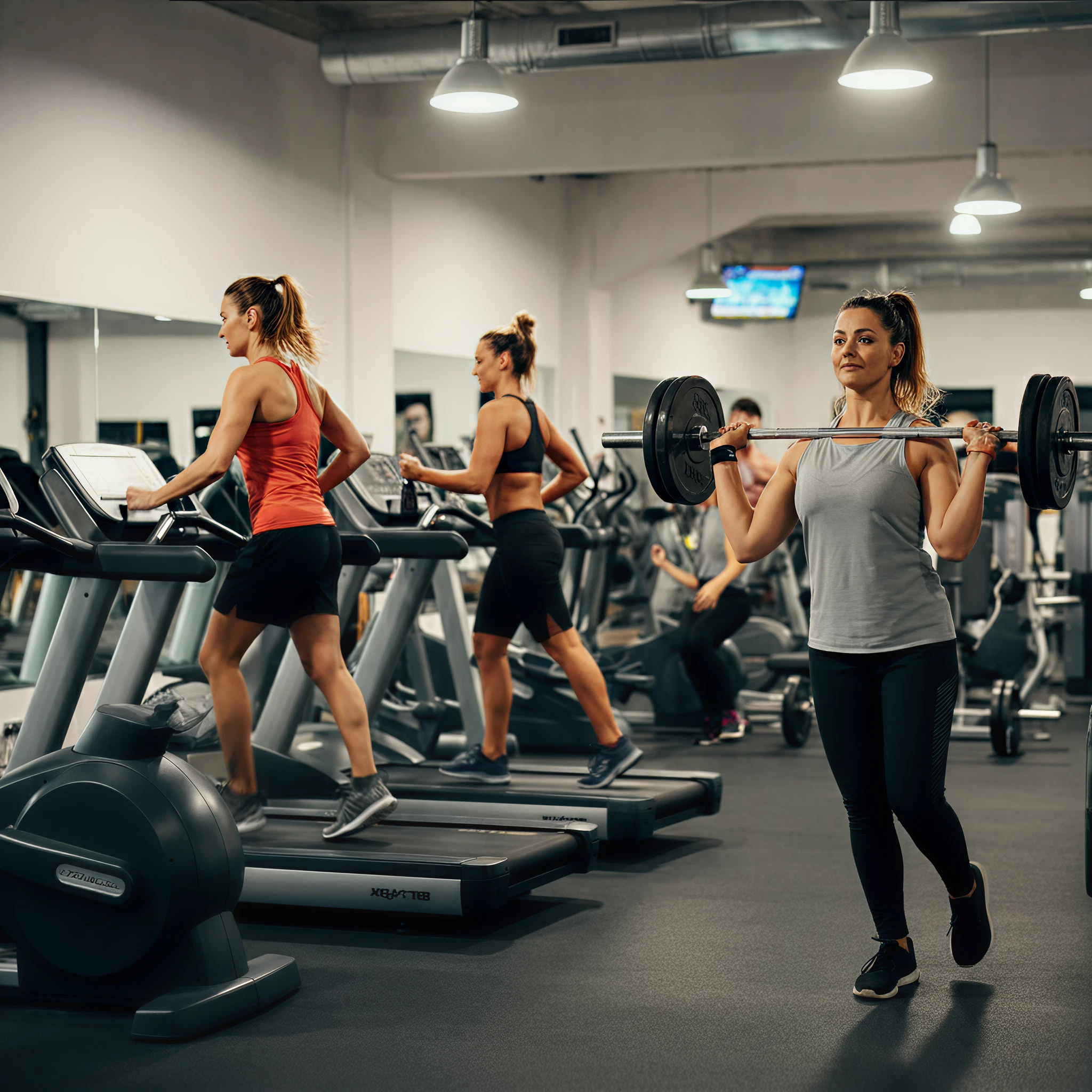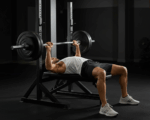Chest exercises are a fundamental part of any great workout routine. Whether you’re a beginner looking to develop a strong foundation, an experienced weightlifter chasing that perfect physique, or a personal trainer helping clients achieve their goals, focusing on effective chest exercises is key to upper body strength and aesthetics.
Here, we’ll explore the best chest exercises, their benefits, and how they can be integrated into a program for maximum impact. From dumbbells to bodyweight movements, this guide ensures there’s something for everyone.
Why Chest Exercises Are Essential
A strong chest is more than just a sign of aesthetic fitness. Here’s why chest exercises should have a spot in your routine:
- Improved Upper Body Strength: Your pectoral muscles (pecs) play a significant role in movements like pushing, throwing, or lifting. A stronger chest means better functional strength in these areas.
- Posture Enhancement: Balanced chest workouts help correct rounded shoulders by building muscle and improving chest mobility.
- Aesthetic Appeal: Whether you’re aiming for that broad, powerful chest or a leaner, more sculpted look, chest exercises will help you get there.
- Support for Other Lifts: A strong chest directly improves other compound lifts like the bench press and contributes to shoulder and tricep stability.
The Key Muscles Targeted by Chest Exercises
Understanding basic chest anatomy helps map your workouts:
- Pectoralis Major: The larger, primary chest muscle responsible for the chest’s bulk. It plays a key role in arm rotation and bringing the arms together.
- Pectoralis Minor: A smaller muscle underneath the major that stabilizes movement.
- Serratus Anterior: While not technically a chest muscle, this contributes to a well-rounded chest, assisting in shoulder stability.
To build definition and size, it’s essential to work all portions of the chest muscle group.
The Best Chest Exercises for Every Routine
1. Bench Press (Flat, Incline, Decline)
The bench press remains the gold standard for chest strength:
- Flat Bench Press targets the middle portion of the chest.
- Incline Bench Press focuses on the upper pecs.
- Decline Bench Press hits the lower pecs effectively.
Tip: Start with lighter weights to ensure proper form, then progressively overload.
2. Dumbbell Chest Press
A close cousin to the barbell bench press, dumbbells offer greater range of motion and muscle activation. They’re ideal for building symmetrical pecs.
3. Push-Ups
Push-ups are a versatile, no-equipment exercise:
- Ideal for beginners mastering chest activation.
- Advanced variations like diamond push-ups or elevated push-ups target the chest and triceps at higher intensities.
Tip: Struggling to get reps in? Perform knee push-ups as a beginner-friendly alternative.
4. Dumbbell Flys
This exercise isolates the pecs, with an increased focus on range of motion. Perform them flat or on an incline bench to target different areas of your chest.
5. Cable Crossovers
Cable crossovers provide constant tension throughout the motion, resulting in a full chest burn. Adjust the pulleys high, mid, or low to focus on specific sections of the pecs.
6. Dips (Chest-Focused)
Leaning forward while performing dips increases chest engagement, especially in the lower pecs.
7. Incline Dumbbell Press
This allows for a greater focus on the upper pecs and helps balance chest development.
8. Plyometric Push-Ups
This explosive move targets fast-twitch muscle fibers, promoting strength and muscle size.
Tip: Integrate these into high-intensity interval training (HIIT) for a challenging chest-focused cardio workout.
The Role of Bodyweight vs. Weighted Chest Exercises
- Bodyweight Workouts (e.g., Push-Ups, Dips)
These exercises are excellent for beginners and require little to no equipment. They help build endurance and muscle control.
- Weighted Workouts (e.g., Bench Press, Dumbbell Flys)
Perfect for those experienced with lifting, weighted chest exercises build mass and strength.
A combination of both will maximize your results over time, allowing for progression from beginner to advanced levels.
Common Mistakes to Avoid
To ensure consistent growth and injury-free training, watch out for the following:
- Overtraining: Hitting chest muscles too frequently can lead to fatigue and stall progress. Aim for 1-2 days per week of chest workouts, allowing adequate recovery.
- Neglecting Form: Poor form not only reduces exercise efficiency but also increases the risk of injury. Ensure proper alignment and technique.
- Skipping Warm-Ups: Prepping your chest muscles with a dynamic warm-up helps improve performance and prevent injury.
Advanced lifters can also benefit by ensuring balance across the upper, lower, and middle portions of the chest.
Pro Tip: Film your workouts to self-assess form or consult with a trainer if unsure.
Creating a Chest Workout Routine
Beginner Routine:
- Push-Ups (3 x 12-15)
- Incline Dumbbell Press (3 x 10-12)
- Dumbbell Flys (3 x 12-15)
Intermediate Routine:
- Bench Press (3 x 8-10)
- Dumbbell Chest Press (3 x 8-10)
- Weighted Dips (3 x 12-15)
- Cable Crossovers (3 x 15)
Advanced Routine:
- Incline Barbell Press (3 x 6-8)
- Plyometric Push-Ups (3 x 15-20)
- Dumbbell Flys (3 x 8-10)
- Incline Dumbbell Flys (3 x 10-12)
- Chest-Focused Dips (4 x Failure)
Scaling intensity by adding sets, increasing resistance, or using supersets ensures continual growth.
Nutrition and Recovery for Chest Development
No chest routine is complete without proper recovery and nutrition:
- Protein Intake: Essential for muscle repair and growth. Aim for 1.6-2.2 grams of protein per kilogram of body weight daily.
- Rest Days: Give your muscles 48-72 hours of recovery between chest workouts.
- Stretching & Mobility Work: Keeps your chest muscles flexible and reduces soreness.
Whether it’s eating lean meats like chicken, tofu, or legumes, your diet should support the demands of muscle growth.
Why Your Chest Might Not Be Growing (and How to Fix It)
If your chest workouts plateau, consider these factors:
- Lack of Progressive Overload: Gradually increase weights or intensity.
- Imbalanced Workouts: Focus on underdeveloped areas, such as the upper or inner chest.
- Neglecting Recovery: Overtraining can sabotage gains.
Reassess your routine periodically and make necessary tweaks.
Elevate Your Chest Workouts Today!
Chest exercises are foundational for anyone looking to build strength, improve posture, or enhance their physique. Whether you’re just starting out or looking to fine-tune a seasoned program, these exercises will help you reach your goals.
Start incorporating the above exercises into your workout plan, and don’t forget to prioritize recovery and nutrition for the best results. For more expert tips, visit Men’s Health Chest Workouts Guide.
Today could be the start of your strongest, most balanced chest yet! Are you ready?








